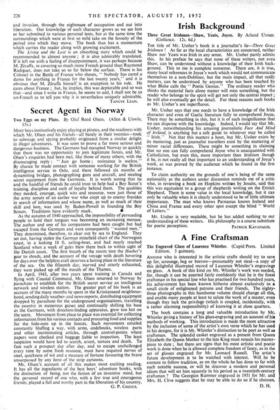A Fine Craftsman
ANYONE who is interested in the artistic crafts should try to save up for, scrounge, beg or borrow—presumably not steal—a copy of this delightful illustrated record of Laurence Whistler's engravings on glass. A book of this kind on Mr. Whistler's work was needed, for, though it can be asserted fairly confidently that he is the finest craftsman in his special line who has practised for two hundred years, his achievement has been known hitherto almost exclusively to a small circle of enlightened patrons and their friends. The eighty- three photographs in this handsome volume shonld change all this, and enable many people at least to salute the work of a master, even though they lack the privilege (which is coupled, incidentally, with a rather alarming responsibility) of knowing it at close quarters.
The book contains a long and valuable introduction by Mr. Whistler giving a history of his glass-engraving and an account of hie methods of working. This introduction is made the more attractive by the inclusion of some of the artist's own verse which he has used in his designs, for it is Mr. Whistler's distinction to be poet as well as craftsman. The splendid casket engraved as a present from Queen Elizabeth the Queen Mother to the late King must remain his master- piece to date ; but there are signs that his most artistic and poetic work is done when he is allowed complete freedom of fancy, as in the set of glasses engraved for Mr. Leonard Russell. The artist's future development is to be watched with interest. Will he be content to follow tradition, as on the whole he has done so far with such notable success, or will he discover a modern and personal idiom that will set him squarely-in his period as a twentieth-century craftsman ? The Georgian Rummer engraved in 1951 for Mr. and Mrs. H. Clive suggests that he may be able to do so if he chooses.
D. H.


























 Previous page
Previous page